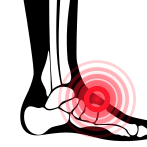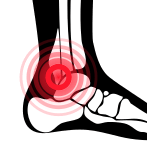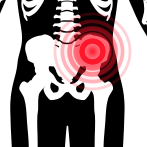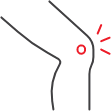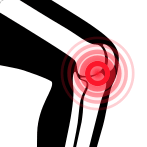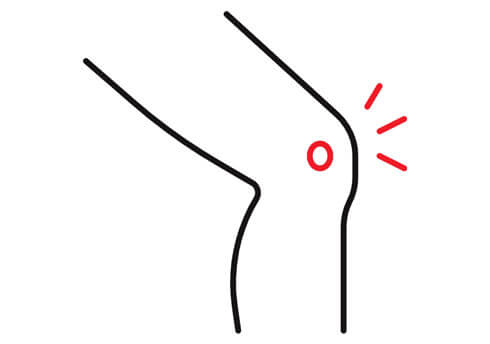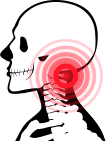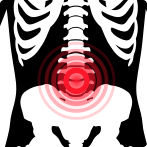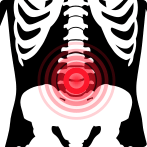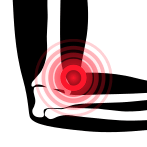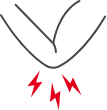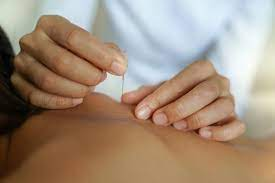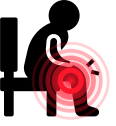Myth 1: You have to be a pro golfer or tennis player to get golfer’s elbow or tennis elbow.
Reality 1: Anyone can get golfer’s elbow and tennis elbow.
Myth 2: Golfer’s elbow and tennis elbow are the same thing.
Reality 2: Golfer’s elbow and tennis elbow are two different conditions but can occur simultaneously.
Myth 3: Both Golfer’s elbow and tennis elbow can be uncomfortable and/or painful.
Reality 3: This one is true.
Golfer’s Elbow vs. Tennis Elbow
Both golfer’s elbow and tennis elbow are overuse injuries caused by repetitive arm and wrist motion. They’re also both forms of epicondylalgia (pain occurring from irritation or acute inflammation of the tendons that attach to the elbow). While the two share many similarities, the main difference between golfer’s elbow and tennis elbow is the site of pain.
Golfer’s elbow affects the “inner” tendons of the elbow (medial epicondyle) whereas tennis elbow affects the “outer” tendons (lateral epicondyle).
What is Golfer’s Elbow?
Scientifically referred to as medial epicondylitis, golfer’s elbow is the inflammation of the inside of the elbow. Golfer’s elbow is usually caused by activities that overactivate the forearm muscles through repeated wrist flexion (bending your wrist downward) and gripping. Some of these include:
- Gardening
- Shoveling
- Playing golf or tennis
- Racquet sports
- Baseball
- Softball
- Weightlifting
- Carpentry
- Painting
- Writing
Signs and Symptoms of Golfer’s Elbow
Pain when making a fist, pain on the inside of the elbow, and pain when twisting your forearm may all indicate golfer’s elbow. Stiffness and hand/wrist weakness are also golfer’s elbow symptoms.
What is Tennis Elbow?
Just as golfer’s elbow has a more scientific name, so does tennis elbow. Lateral epicondylitis is the inflammation of the outside of the forearm and elbow areas. Tennis elbow is often brought on by some of the same activities that spur golfer’s elbow, as well as several others. Several professions that are at high risk for tennis elbow include
- Plumbers
- Painters
- Carpenters
- Butchers
- and Tennis pros (of course!)
Signs and Symptoms of Tennis Elbow
Pain that radiates from the outside of the elbow to the forearm and wrist area may indicate tennis elbow. This pain could feel like a nagging ache or may present itself during certain activities that involve lifting, gripping, or reaching.
Treatment for Golfer’s/Tennis Elbow
Although golfer’s elbow and tennis elbow are not the same, their treatment methods may be. The first thing to do if you are experiencing pain in either the inner or outer parts of your forearms (or both) is to actively rest- that is, taking a break from the activity or activities that were giving you the most physical stress until symptoms subside, but remaining physical active. This is not the time to stop exercising, rather, having a professional coach you on the ways you can stay active without worsening your elbow pain is key to recovery and return to your favorite activities.
When pain persists for than 2 weeks, seeking physical therapy for golfer’s elbow and tennis elbow can speed up the healing process. Especially with tennis or golfer’s elbow, the longer you delay care, the longer it will take to get rid of your pain and limitations. Your physical therapist will provide the right plan of care, so you can better manage and recover from your condition.
Next Level Physio for Golfer’s Elbow and Tennis Elbow
Whether you have golfer’s elbow, tennis elbow, or an otherwise injured elbow, Next Level Physio is here to help. We work with people every day to help rehabilitate them back to health, pain-free living. Best of all, we do it without pain meds or surgery.
What do we do differently at Next Level? On top of using cutting edge modalities and treatment strategies, we also provide you with programming to keep the rest of your body from deteriorating, and for those who are active, we can coach you on what CAN do to keep fit and healthy during the long recovery process.
In addition to physical therapy for tennis elbow and golfer’s elbow, we also treat many other conditions including:
- Sports injuries
- Pre-surgical rehab
- Post-surgical rehab
- Neck pain
- Shoulder and elbow pain
- Vertigo and concussion
- Wrist and hand pain
- Ankle and foot pain
- Sciatica/back pain… and more
Some of the physical therapy methods we use for pain treatment include:
- IASTM Technique
- Blood Flow Restriction Training
- Therapeutic Exercise
- Shockwave
- Cold Laser
- Australian Manual Therapy
- Cupping, and more
Click here to schedule an appointment and a free consultation.
